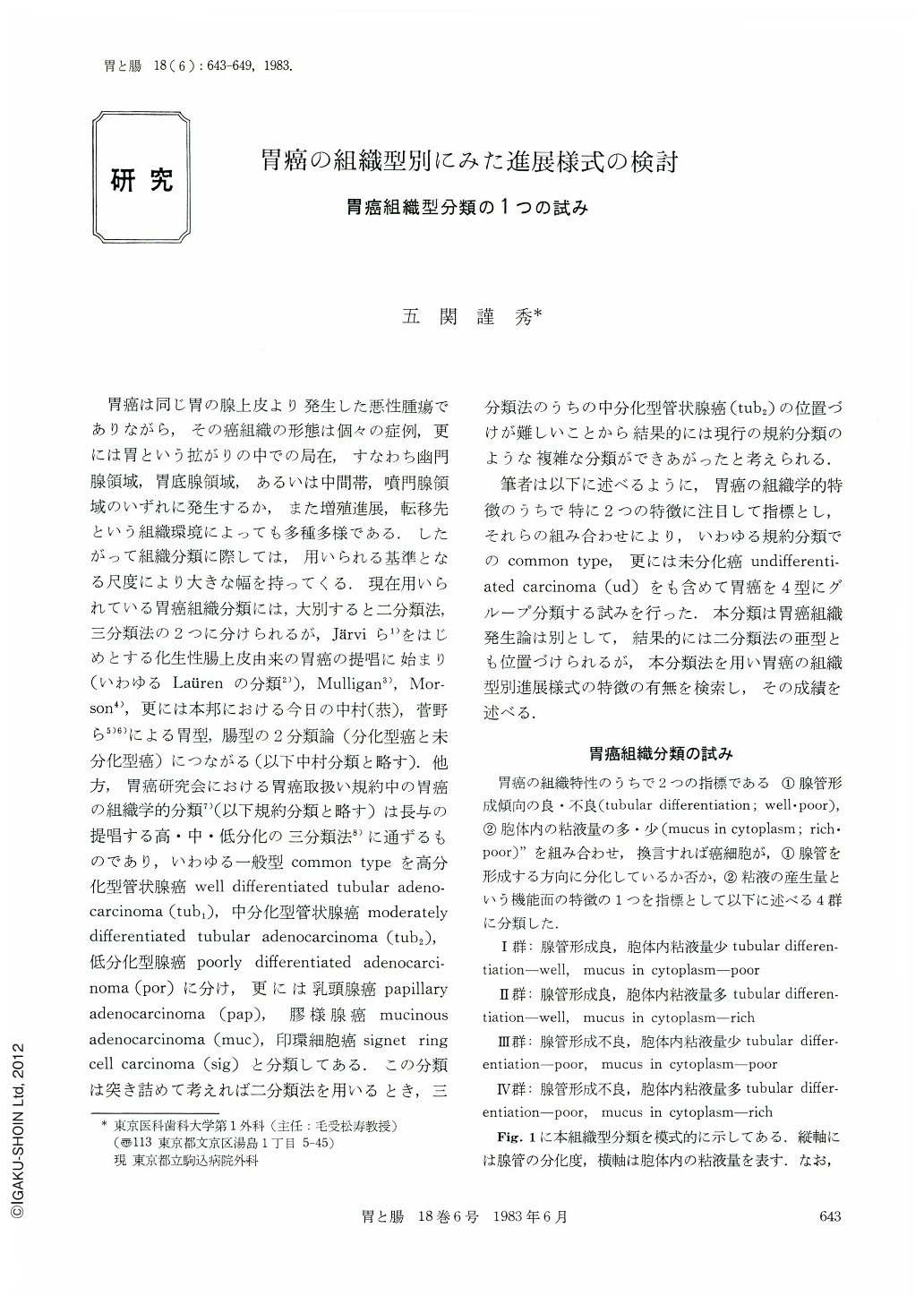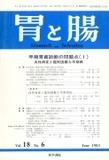Japanese
English
- 有料閲覧
- Abstract 文献概要
- 1ページ目 Look Inside
胃癌は同じ胃の腺上皮より発生した悪性腫瘍でありながら,その癌組織の形態は個々の症例,更には胃という拡がりの中での局在,すなわち幽門腺領域,胃底腺領域,あるいは中間帯,噴門腺領域のいずれに発生するか,また増殖進展,転移先という組織環境によっても多種多様である.したがって組織分類に際しては,用いられる基準となる尺度により大きな幅を持ってくる.現在用いられている胃癌組織分類には,大別すると二分類法,三分類法の2つに分けられるが,Järviらをはじめとする化生性腸上皮由来の胃癌の提唱に始まり(いわゆるLaürenの分類),Mulligan,Morson,更には本邦における今日の中村(恭),菅野らによる胃型,腸型の2分類論(分化型癌と未分化型癌)につながる(以下中村分類と略す).他方,胃癌研究会における胃癌取扱い規約中の胃癌の組織学的分類(以下規約分類と略す)は長与の提唱する高・中・低分化の三分類法に通ずるものであり,いわゆる一般型common typeを高分化型管状腺癌 well differentiated tubular adenocarcinoma(tub1),中分化型管状腺癌 moderately differentiated tubular adenocarcinoma(tub2),低分化型腺癌 poorly differentiated adenocarcinoma(por)に分け,更には乳頭腺癌 papillary adenocarcinoma(pap),膠様腺癌 mucinous adenocarcinoma(muc),印環細胞癌 signet ring cell carcinoma(sig)と分類してある.この分類は突き詰めて考えれば二分類法を用いるとき,三分類法のうちの中分化型管状腺癌(tub2)の位置づけが難しいことから結果的には現行の規約分類のような複雑な分類ができあがったと考えられる.
筆者は以下に述べるように,胃癌の組織学的特徴のうちで特に2つの特徴に注目して指標とし,それらの組み合わせにより,いわゆる規約分類でのcommon type,更には未分化癌 undifferentiated carcinoma(ud)をも含めて胃癌を4型にグループ分類する試みを行った.本分類は胃癌組織発生論は別として,結果的には二分類法の亜型とも位置づけられるが,本分類法を用い胃癌の組織型別進展様式の特徴の有無を検索し,その成績を述べる.
By combining two of the various morphological characteristics of the carcinomatous tissue of stomach, namely, the degree of differentiation of the glandular tubules and the amount of mucus in the cytoplasm, the histological type of the gastric carcinoma was categorized into four groups. “Group Ⅰ: Tubular differentiation―well; mucus in cytoplasm―poor; Group Ⅱ: Tubular differentiation―well; mucus in cytoplasm―rich; Group Ⅲ: Tubular differentiation―poor; mucus in cytoplasm―poor; Group Ⅳ: Tubular differentiation―poor; mucus in cytoplasm―rich.” Then a study about the relation between the histological types of the primary lesions and the modes of development and recurrences of gastric carcinoma in autopsy cases was carried out.
(1) In Group Ⅰ, the frequency and extent of hematogenous metastasis such as to liver was higher, while (2) in Group Ⅳ, that of lymph node metastasis, direct invasion into surrounding organs, and peritoneal dissemination were higher. (3) In Group Ⅲ, which showed the intermediate mode of development in nature to those of Group Ⅰ and Ⅳ, the frequency and severity of the bone marrow metastasis was the highest. Statistically, the clear significant differences were established in the modes of development and the extent of infiltration among all of the groups.

Copyright © 1983, Igaku-Shoin Ltd. All rights reserved.


